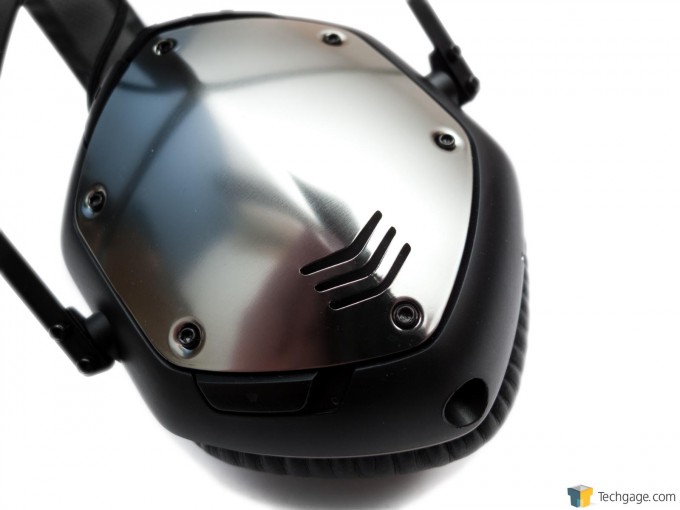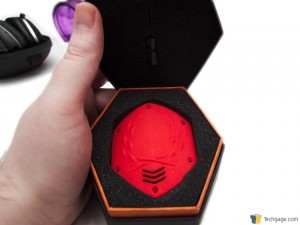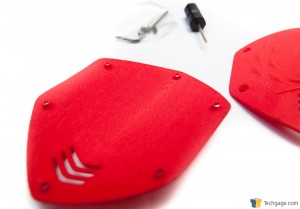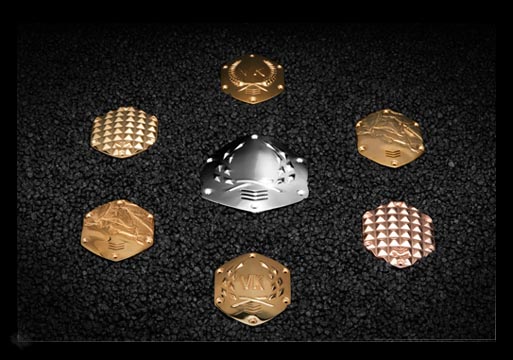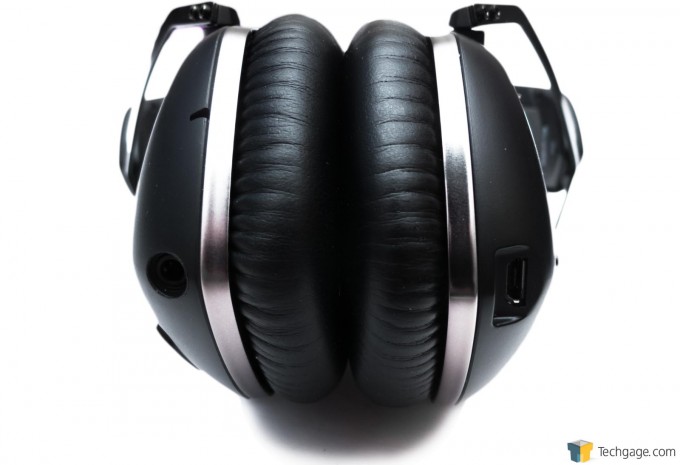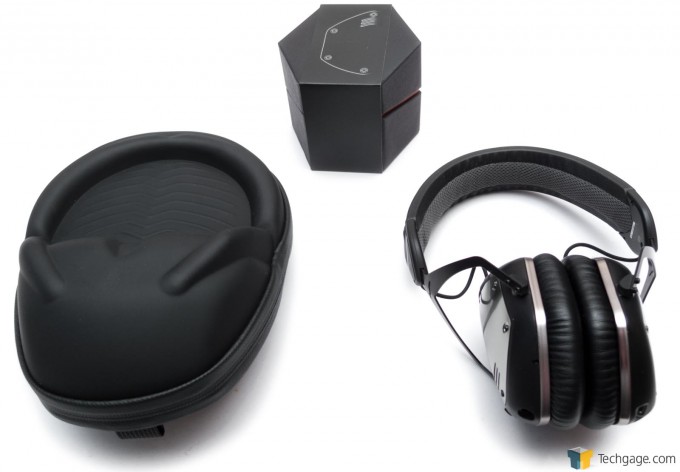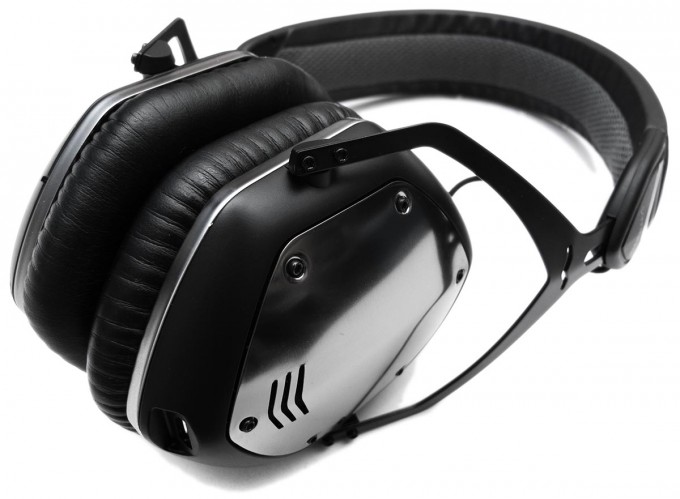- Qualcomm Launches Snapdragon 4 Gen 2 Mobile Platform
- AMD Launches Ryzen PRO 7000 Series Mobile & Desktop Platform
- Intel Launches Sleek Single-Slot Arc Pro A60 Workstation Graphics Card
- NVIDIA Announces Latest Ada Lovelace Additions: GeForce RTX 4060 Ti & RTX 4060
- Maxon Redshift With AMD Radeon GPU Rendering Support Now Available
V-MODA Crossfade Wireless Headset Review: Bringing 3D Printed Personalization To High-End Audio

Are you in the market for some high-end wireless headphones but crave something a little different? V-MODA may have something of interest. With a range of 3D printed customizable headphones available in a variety of materials, including metal, the Crossfade Wireless certainly has our ears perked.
High-end audio can be quite competitive, with each company trying to grab attention through iconic designs and a transportive experience of audio fidelity. V-MODA certainly has the fidelity part, but its iconic image is something a little different from the rest; 3D printed side panels of your own design.
While V-MODA’s Crossfade M-100s have been quite popular, the one thing lacking from the company’s range of products was an audiophile grade wireless solution. Enter the Crossfade Wireless. This uses the M-100 as a base design, but throws Bluetooth into the mix; untethered from the confines of cables – sort of. It might be wireless, but it still has cables for charging, and surprisingly, analog fallback so you can plug it into a dedicated amp if you so wish.
Initial thoughts
V-MODA is most definitely targeted at the retail market. The tactile nature of its packaging encourages a sense of solidarity. Thick card, soft handle, a ribbon holding it all closed, a non-standard box shape – it’s all to bring about a sense of something quite special. The cables are neatly wrapped up, folded and suspended under an elasticated web of supports, which then velcros to the inside of a very stylish hard-box with the headphones.
While you can purchase this headset and other V-MODA products from the likes of Amazon, it does encourage you to use its own website simply because of the selection of available parts and customization options. V-MODA encourages a certain sense of personalization with its products, so it’s worth browsing its website to find something that will spark your imagination. The most important aspect of its design is the 3D printed side panels or shields.
Our product sample was sent with an extra pair of 3D printed, red plastic side panels, using one of V-MODA’s standard designs. Since the designs are 3D printed, you can upload your own designs on a wide selection of materials, including plastics, steel, aluminum, gold, and if you have especially deep pockets, platinum, for the low-low price of $30,000.
A number of accessories are also available such as coiled cables, attachable mics and replacement ear cushions. For an over-ear or circumaural design, I found the Crossfade Wireless to be very tight, and this is coming from someone with relatively small ears. If you plan on getting this headset, be sure to get the larger XL ear pads as well, to be safe.
Wired Audio
The Crossfade Wireless is a mixed-mode headset that can be used either as an analog headset, making use of a standard 3.5mm jack (with an in-line mic and call button), or via Bluetooth supported by USB charging. The extra flexibility is much appreciated, especially since the headset can be turned off and still work over a wired cable.
There are some caveats with the mixed mode though. While you can listen to music perfectly fine over analog, I don’t recommend charging it up at the same time. First, you would have two cables attached to the headset, one 3.5mm jack and the other USB for charging. When the USB cable is plugged in and charging, you will hear very prevalent digital noise if you have the analog cable plugged in too.
The headset makes use of a 3.5mm jack, and is easily replaceable by pretty much any other 3.5mm cable. It does include an in-line mic as well, which is internally wired, resulting in a cable that has a TRS (Tip Ring Sleeve) connector on one end, and a TRRS (Tip Ring Ring Sleeve) on the other.
What is slightly odd is that the 3.5mm socket is in the right ear cup (traditionally, this goes in the left), which has the power switch and the Bluetooth media controls. The micro-USB connector to charge the headset is in the left ear cup. This is confusing because the power indicator light (that shows it’s charging or active) is on the opposite side of where the power cable goes.
Wireless Audio
When Bluetooth is enabled, there is a faint background hiss that persists when active, there is also a half second delay when it wakes up out of sleep mode. The problem is that you can’t charge the headset while streaming over Bluetooth, either, which is extremely unfortunate. There is also a rather bad background noise of digital pops and squeaks when using analog and charging at the same time, making the headset basically useless while it’s being charged.
For a premium headset, it’s disappointing to see that the Bluetooth connection lacks support for the aptX protocol, relying on the standard SBC codec instead. In fact, the general audio quality of the Bluetooth is somewhat lacking. The range is not very far, and begins to lose connection after a few meters (but this is based on environment factors too, such as thickness of walls and other ambient wireless signals).
The other major issue is that even with the unit switched off, the battery drains after a couple of days, even without use. They have to be kept plugged in if you wish to use them later on over Bluetooth.
Audio Testing
For reference, I have a pair of Beyerdynamic DT990 PROs hooked up to an O2 Amp and ODAC – this has been my standard setup for 2-3 years now, and serves as a baseline for all my audio comparisons. As such, this is what my terminology is in reference too when I say excessive bass and so forth.
To try and overcome the psychological issues of music memory and ear tuning, I start off the comparison with my ears listening to the DT990s. I then put on the Crossfades, played a variety of music and made notes. This is done before the break-in. I then hook up the V-MODAs to the stress-test system to stretch the drivers out for a few hours, while I continue to listen to my usual DT990s. After the break-in, I don the Crossfades again and make the same comparisons.
My initial reaction to the audio quality of the Crossfade Wireless was mixed – bass was muddy and boomy, completely overpowering the mid-range, with a crass high-end providing an uncomfortable piercing sensation. This is not what I was expecting from such a premium headset…. however, after reviewing plenty of headsets and headphones over the years, one thing I always do is break them in over night with a variety of music at a slightly excessive volume.
Whether or not you believe in break-in is up to you, but for me, I notice a difference with some equipment, and as such, subject speakers and headsets to a 12-hour torture test to get them to settle and stretch out. With these V-MODA Crossfade Wireless units, the break-in was most certainly noticeable. The bass sharpened up (less boom and ringing with kick-drums), the mids became more noticeable, and the treble less piercing.
The closed-back nature of the Crossfade Wireless makes for an intimate sound-stage, so bass response is always going to be more pronounced. Isolation is decent, at least, if your ears fit inside the rather small ear cups.
You are definitely exposed to the full sound stage though; nothing is clouded, mids are clear, it’s what you would expect from a premium headset. It is a low impedance headset, and you definitely don’t need a dedicated headphone amp to drive it. Pretty much any mobile device should be able to produce sufficient power to keep these cans pumping out the beats.
Bluetooth Testing
As mentioned previously, the Bluetooth on this headset is definitely not its strong point. In fact, it’s a major disappointment when compared to the rest of the headset. It honestly feels like it was just tacked-on at the last minute with almost no time spent fine-tuning or testing out different solutions. While Bluetooth has a bit of a bad name when it comes to audio in general, there are products out there that can make you think twice over the whole affair; the Crossfade Wireless just isn’t one of them.
Problems have already been mentioned with the Bluetooth already, such as the background hiss, the delay on activation, lack of charging when active, and short-ish range, so we’ll focus on the audio quality here. Switching to Bluetooth means you have to rely on the headset’s built-in DAC (digital analog converter) and amp. There’s only so much electronics you can fit into a headset of this size, so it’s not too surprising that audio quality suffers.
Compared to many Bluetooth headsets I’ve heard over the years, this one is certainly one of the better attempts, but it still falls short. While I’m not hearing compression artifacts (which is a good sign), there is still a general lack of fidelity in the high end ( a common issue with BT). This effectively means that the balance shifts and the general tone becomes bottom heavy. Bass and lower mid-range become a lot more prominent, with high-mids and treble tapering off. It’s not a huge shift, but it is noticeable.
Given enough time, your ears will become accustomed to it, especially if it’s your primary means of listening. This is not to say that the Bluetooth connection is awful, far from it (I’ve heard some atrocious setups before), but V-MODA’s implementation is lacking given the price range.
Final Thoughts
Credit where credit is due, the dual diaphragm drivers produce a good sound-stage, but it is held back by a sub-par wireless configuration. When fully wired, it’s a very fine headset. It does seem odd to put a rather poor Bluetooth setup in an otherwise fantastic product.
The ability to customize, the flexibility to go wired or wireless, fully detachable cable, and replaceable ear pads, adds up to a fine product indeed. The price is steep as a result, typically retailing for around $300 on V-MODA’s site direct, or slightly less on Amazon. If you are considering this headset, it’s best to think of the wireless as a small bonus, rather than an actual feature, as it’s quite clear that it wasn’t properly implemented for it to be a real wireless headset.
Pros
- Excellent audio quality when wired.
- Good isolation of background noise.
- Detachable cable with standard 3.5mm socket.
- Customizable side panels for a personal touch.
- Wireless controls for volume, play and track changing.
Cons
- Bluetooth was more of an afterthought.
- Can’t realistically listen to headset while charging.
- Supplied ear pads are on the small size.
Support our efforts! With ad revenue at an all-time low for written websites, we're relying more than ever on reader support to help us continue putting so much effort into this type of content. You can support us by becoming a Patron, or by using our Amazon shopping affiliate links listed through our articles. Thanks for your support!




